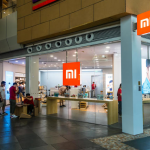How to Maximize Advertising Impact With Technology
To stand out and achieve measurable success, businesses must prioritize the impact of their advertising in our modern constantly evolving digital landscape. The effectiveness and impact of advertising campaigns on their intended audience are determined by a range of important metrics, such as reach, engagement, brand awareness, and conversion rates, all of which contribute to the overall impact of advertising. In this dynamic world, harnessing cutting-edge technology has become essential for maximizing outcomes. With the help of state-of-the-art platforms and tools, businesses can customize their advertising strategies to be more effective, efficient, and personalized.
How Advertising Technology Has Changed Over Time
Historical Background
There have been big changes in advertising over the last 100 years. From print ads to radio, TV, and now digital platforms, the ways that businesses can reach customers have changed a lot. When the internet came along, it was a big change that opened up new ways to do things like target ads and analyze data in real-time.
Important Steps Forward in Ad Tech
The rise of search engine marketing in the late 1990s, the start of social media advertising in the mid-2000s, and the creation of programmatic advertising and real-time bids in the 2010s are all important turning points in the history of advertising technology. These improvements have made it possible for ads to be very specific and measurable.
Different kinds of Advertising Technologies
Using Digital Advertising
Digital advertising includes all forms of online marketing, such as search engine marketing, social media ads, email marketing, and display ads. Businesses can reach a lot of people and get accurate information about how well their campaigns are doing.
Programmatic Advertising
Using real-time bids (RTB) to buy ad space, programmatic advertising buys and sells online ads automatically. This technology makes sure that ads are shown to the right people at the right time, which makes the most of the money spent on ads and their usefulness.
Advertising on Social Networks
Social media sites like Facebook, Instagram, and Twitter have powerful advertising tools that let you target users precisely based on their demographics, hobbies, and actions. Advertising on social media is very engaging, which makes it easier to connect directly with customers.
Advertising on Mobile
Mobile advertising has become an important part of digital marketing plans as smartphones become more popular. This includes ads that show up in SMS and MMS messages, in-app ads, mobile search ads, and location-based ads that show ads to people based on where they are.
Using Video Advertising
Video ads, such as those on YouTube, social media, over-the-top (OTT) services, and interactive videos, are very interesting and work very well. Video material is especially interesting and often leads to higher rates of engagement and conversion.
Important Techs Getting The Most Out of Advertising
Smart Computers And Machines That Learn
AI and machine learning algorithms look at huge amounts of data to make ads more relevant to each person. These technologies help predict how people will act, find the best places to put ads, and make material that changes based on what each person wants.
Analysis of Big Data
Big data analytics gives marketers a lot of information about how people act, what they like, and what trends are happening. When businesses look at big datasets, they can better divide their viewers into groups and make campaigns that appeal to those groups.
Adding to reality (AR) And making it real (VR)
AR and VR technologies let people interact with goods in a virtual world, which makes advertising more immersive. Virtual stores, try-ons, and ads that are more like games keep users interested and give brands a new way to show off their goods.
Blockchain
By keeping track of ad deals in a decentralized ledger, blockchain technology makes digital advertising more open and trustworthy. It helps stop ad scams, makes sure data is managed safely, and lets smart contracts buy ads automatically.
World Wide Web (IoT)
The IoT links smart devices together, which lets ads show up in the right place and on the right gadget. Ads can be sent to people based on real-time data from devices that are linked, giving them messages that are very relevant and timely.
Benefits of Technology-Driven Advertising
Better Targeting Precision technology lets marketers target their audience more precisely than ever before. Advanced algorithms and data analytics make sure that ads are shown to the most relevant people, which raises the chances that they will be clicked on and converted.
More Money Back
Technology-driven advertising often has a better return on investment (ROI) because it can improve ad placements and targeting strategies. Businesses can make better use of their advertising funds, cutting down on waste and increasing effectiveness.
Better Engagement With Customers
AI, AR, and VR are examples of interactive technologies that make customer interaction better by giving them more personalized and immersive experiences. These technologies help businesses connect with their customers more deeply, which makes customers more loyal and vocal about their brands.
Automating And Saving Time
The process of getting ads is sped up by automated advertising platforms, which cut down on manual work and boost efficiency. Programmatic advertising, in particular, lets bids happen in real-time and automatically places ads, making sure that they work as well as possible.
Problems And Limitations of Using Technology in Ads
Concerns About Data Privacy
When advertising uses new technologies, it makes people very worried about their data safety. More and more people are aware of how their personal information is gathered and used, which has led to stricter rules and calls for businesses to be more open.
Problems With Ad Fraud And Security
Ad fraud is still a big problem in the world of internet advertising. Bad people take advantage of holes in the ad ecosystem to get fake clicks, impressions, and sales. There may be answers in blockchain technology, but it is still not widely used.
Problems With Adopting Technology
Many businesses find it hard to use new advertising tools, even though they have benefits. Some of these are high prices, a lack of knowledge, and a dislike of change. Getting past these problems will require spending money on training and building up the right tools. Leveraging technology is essential for maximizing advertising impact in today’s digital landscape. Advanced tools and platforms enable businesses to create highly targeted, personalized, and engaging ad campaigns that drive results.
While challenges such as data privacy and ad fraud must be addressed, the benefits of technology-driven advertising are undeniable. By embracing these innovations, Advertising Agencies and businesses can stay ahead of the competition and achieve their marketing goals.














